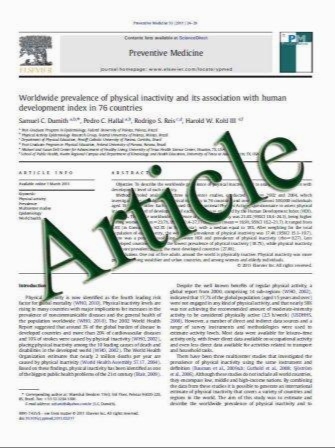Efficacy, side effects and route of administration are more important than frequency of dosing of anti-osteoporosis treatments in determining patient adherence: a critical review of published articles from 1970 to 2009
- نوع فایل : کتاب
- زبان : انگلیسی
- مؤلف : S. Lee & P. Glendenning & C. A. Inderjeeth
- چاپ و سال / کشور: 2010
Description
The purposes of the study were to review available published literature on magnitude of non-adherence with osteoporosis regimens and to determine the association between frequency andmodality ofmedication administration with patient preference and adherence. We searched peerreviewed journal databases—MEDLINE, EMBASE, Biosis and Derwent Drug File for publications (January 1979 to January 2009) including MeSH terms—“patient preference”, “adherence” and “compliance” based on “dosing frequency” and “modality”. Since adherence was difficult to accurately quantify, preference, compliance and persistence were evaluated. Patients’ preference and adherence at 12 months were higher with weekly over daily bisphosphonates (≥84% preference for weekly, medication possession ratios (MPR) 60–76% vs 46–64%; persistence 43.6–69.7% vs 31.7–55.7%). MPR reported for oral bisphosphonates were 68–71% at 12 months. At 2 years, only 43% of patients had MPR ≥80% for daily and weekly bisphosphonates. Observational studies (6–12 months) reported discontinuation rates of 18–22% for daily and 7% for weekly bisphosphonates. Data on monthly bisphosphonates are conflicting and confounded by cost differences, patient support programmes and definition of persistence. Studies suggest patient preference for annual zoledronic acid infusions over weekly bisphosphonates (66.4–78.8% vs 9.0–19.7%, respectively), but no data on compliance or persistence are available. Drug effectiveness, side effects and route of administration were more important than frequency. Although less frequent dosing is preferred, other factors such as perceived efficacy, side effects, medication cost, availability of patient support programmes and route of delivery are equally important. Adherence is complex and difficult to quantify and may not be exclusively influenced by frequency of medication administration.
Osteoporos Int (2011) 22:741–753 DOI 10.1007/s00198-010-1335-x Received: 26 March 2010 / Accepted: 4 June 2010 / Published online: 30 June 2010


